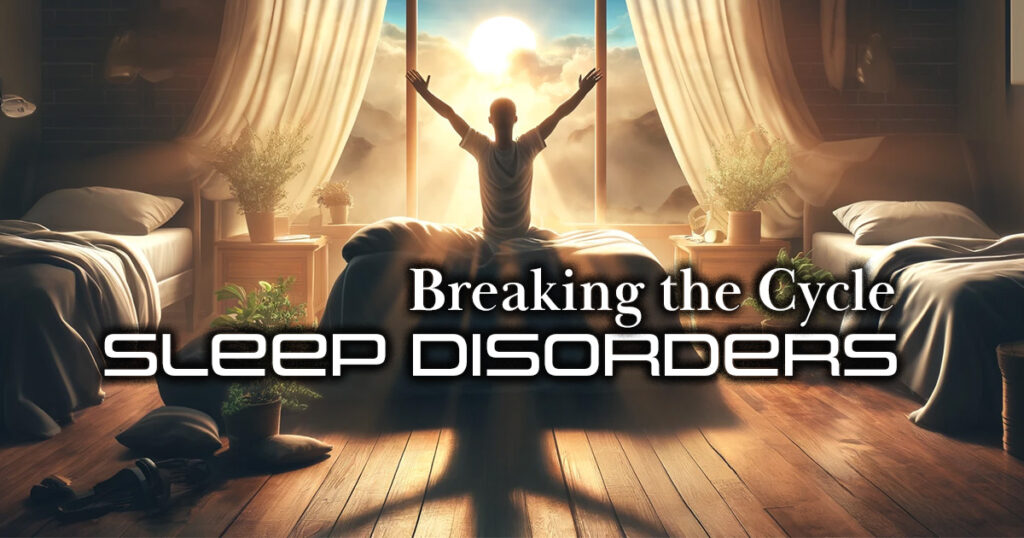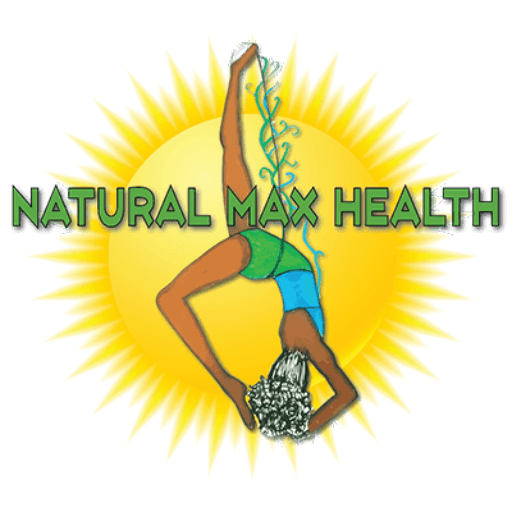Breaking the Cycle: Understanding & Conquering Sleep Disorders

In my previous article, “Why Sleep Matters,” we explored the pivotal role sleep plays in our overall well-being, touching on how its absence—particularly the lack of quality sleep—can significantly undermine our health, potentially even shortening our lifespan. We briefly examined several factors that influence our ability to sleep well. Building on that foundation, this article aims to delve deeper into the realm of inadequate sleep, focusing specifically on sleep disorders. Join me as we uncover the complexities of these conditions and their profound impact on our lives.
What Is a Sleep Disorder?
The American Psychiatric Association defines “sleep disorders” as any condition that involves problems with the quality, timing, and amount of sleep a person gets, resulting in daytime Stress and impairment in functioning. According to the American Sleep Association, 50-70 million adults in the US suffer from some form of sleep disorder. In addition, more than 100 million Americans of all ages report not getting enough sleep for one reason or another. Insomnia is the most common type of sleep disorder, affecting millions of Americans. Let’s begin there and then discuss other prevalent types of sleeping disorders.
Insomnia
A person struggling with insomnia will experience persistent problems falling and staying asleep. Scientific studies show that stress is the leading cause of insomnia. The reason for all the stress is that many individuals are kept awake at night due to various concerns such as finances, family, health, work, and school. While stress is the most common cause of insomnia, several other conditions can prevent a person from falling asleep and staying asleep, such as anxiety, depression, pain, hormonal changes, irritated skin due to eczema or other skin disorders, health issues such as allergies and acid reflux, medications, eating heavy meals close to bedtime, caffeine, and alcohol.
There are three classification types of insomnia.
- Sleep-onset: Exhibited by a person having trouble falling asleep.
- Sleep maintenance: This is exemplified when a person has trouble staying asleep through the night or waking up too early.
- Mixed insomnia: A person with this condition will experience trouble falling asleep and staying asleep through the night.
Sleep Apnea
Sleep apnea is a sleep disorder that not only affects the person but can also affect spouses or other family members living in the same household due to loud snoring. The phenomenon of sleep apnea is related to the respiratory system. Sleep apnea is a disorder in which a person’s breathing is interrupted during sleep due to restricted airflow through the upper airways; this is also likely to be accompanied by loud snoring and brief awakening throughout the night. In addition to snoring, sleep apnea also causes gasping, choking sounds, and excessive daytime sleepiness. There are two types of sleep apnea:
- Obstructive sleep apnea – is caused by a physical obstruction in the airway.
- Central sleep apnea – is caused by a failure of the brain to signal the muscle to breathe.
Narcolepsy
Narcolepsy is one of the most dangerous sleep disorders. The condition is rare, however, as it only affects approximately 100,000 Americans. According to the Mayo Clinic, narcolepsy is a rare long-term brain condition that can prevent a person from choosing when to wake or sleep. This condition makes people very drowsy during the day, and they find it hard to stay awake for long periods of time.
It is believed that narcolepsy is caused by a lack of the brain chemical hypocretin, also known as orexin, which regulates wakefulness.
Narcolepsy is a life-long condition for which there’s no cure. Still, medicines and lifestyle changes can help manage the symptoms. Later, in our closing statement, I’ll discuss some lifestyle changes one can make to help alleviate some symptoms of narcolepsy.
REM Behavior Disorder
REM, or rapid eye movement sleep, is a unique phase of sleep characterized by random rapid eye movement accompanied by low muscle tone throughout the body and the sleeper’s propensity to dream vividly.
We spend 15-20% of our sleep time in REM each night. During this sleep phase, our voluntary muscles become paralyzed, an automatic protective system so that we don’t act out our dreams and injure ourselves during sleep. Unfortunately, people with REM Behavior Disorder tend to act out their dreams due to the lack of protective paralysis that should occur during sleep. The lack of paralysis causes them to do things like diving off the bed, kicking and punching the air, or—even worse—kicking and punching at their partner sleeping next to them.
Treatment for REM Behavior Disorder may include the following physical safeguards and medications, as shown below:
Physical safeguards
- Padding the floor near the bed
- Removing dangerous objects from the bedroom, such as sharp items and weapons
- Placing barriers on the side of the bed
- Moving furniture away from the bed
- Protecting bedroom windows
- Possibly sleep in a separate bed or room away from your partner until symptoms are controlled
Medications
Melatonin may be used to help reduce or eliminate your symptoms.
Clonazepam (Klonopin)- is a prescription medication often used to treat anxiety but has been successful in reducing symptoms of REM sleep behavior. Discuss the side effects with your care provider as with any other medicine.
Restless Legs Syndrome (RLS)
Restless legs syndrome affects over 10% of the population, with women affected the most. It is a neurological disorder that causes an irresistible urge to move the legs. The urge is caused by uncomfortable sensations like itching, burning, or crawling that can only be relieved by movement.
People suffering from RLS describe the sensation as an electrical current flowing through the legs—a creepy crawly feeling. One person described the feeling as Coca-Cola bubbling through their veins. (I know that had to be a weird feeling). These unique and less-than-pleasant feelings often occur in the evening or at night, leading to difficulty falling or staying asleep. Getting up and moving around is the only thing comforting those suffering from RLS.
Although the cause of RLS is not known, according to an article published by Johns Hopkins Medicine, some cases have been linked to nerve damage in the legs from diabetes, kidney problems, iron deficiency, certain medicines, pregnancy, and alcoholism.
A study published by Home Remedies, Prevention Health co-signs on the “Iron Theory.” Some experts believe that an iron deficiency is responsible for a deficiency of the neurotransmitter dopamine. Dopamine regulates the smoothness of movement, and the body needs iron to make dopamine. An estimated 25% of people with RLS have low iron levels in their blood. If you suffer from RLS, checking your iron levels is an excellent first step.
Parasomnias
Parasomnias are a group of sleep disorders involving abnormal behaviors or experiences during sleep. Some of the everyday experiences are sleepwalking, sleep talking, night terrors, and nightmares. These conditions can be traumatic for the person experiencing them as well as their sleep partner.
Bruxism
Bruxism is a sleep disorder that involves grinding or clenching the teeth while sleeping. It can cause tooth damage, jaw pain, headaches, and other problems.
In Conclusion
The significance of high-quality sleep in fostering both physical and mental health, nurturing relationships, and spreading positivity cannot be overstated—as detailed in my previous article, “Why Sleep Matters.” However, for those grappling with sleep disorders, the journey to achieving restorative sleep can seem daunting.
Many sleep disorders can be mitigated with simple lifestyle adjustments, while others demand more in-depth, cellular-level healing. Despite the pessimistic views you might encounter, suggesting that certain sleep disorders are incurable, I encourage you to take charge of your health narrative. Remember, as I’ve reiterated, based on my herbal school learnings, that over 95% of diseases in developed countries (like the United States) stem from nutritional and lifestyle choices, not genetics. Genetics only accounts for approximately 5% of all diseases. As a result, the statistics mentioned earlier emphasize lifestyle’s power in influencing our health outcomes. As the saying goes, “Genetics loads the gun, but your lifestyle pulls the trigger.”
Understanding the Mechanics of Your Body Is Critical for Good Health
Understanding the mechanics of your body is crucial in conquering chronic conditions, including sleep disorders. The common disruptive issue in our society is overeating yet being undernourished, which fuels a myriad of health issues, including sleep problems. Sleep disorders not only disrupt your rest but also cast a long shadow over your entire life, hindering recovery from other illnesses. If you’re weary of this cycle, now is the moment to reclaim your well-being. Therefore, please collaborate with your healthcare provider, but ensure you’re in the driver’s seat of your health journey.
Familiarize yourself with the workings of your circulatory and lymphatic systems and embrace lifestyle changes to bolster their functionality. My numerous blog articles offer valuable insights into enhancing your health and wellness. My writings are about helping you understand your body’s cellular foundation, what benefits or harms it, and choosing foods and a lifestyle that extends your life rather than compromises your well-being.
Repetition underscores a crucial message: sleep disorders have far-reaching consequences beyond poor sleep; they can impede overall quality of life and slow recovery from other health conditions.
Some experts may have convinced you that there is no cure for your sleep condition, implying this is your life’s reality, your fate. But I say, “Write your own prognosis.”
If you’re ready to break free from this cycle, assert control over your health. Engage proactively with your healthcare provider, but remember, the ultimate power lies with you.
If you are sick and tired of being sick and tired, now is the time to take control of your life!
If you are sick and tired of being sick and tired, now is the time to take control of your life!
Sakinah Bellamy, Holistic Health Coach and Certified Personal Trainer
I invite you to explore my entire collection of articles by clicking on the following link for comprehensive guidance on embarking on a path toward healing and wellness: Natural Max Health’s Blog Articles. The insights will empower you to create a conducive environment for your body’s natural healing processes and allow it to do what it was designed to do—heal itself. Until next time, happy healing, and may you get good restful sleep. See you soon, and God bless.
